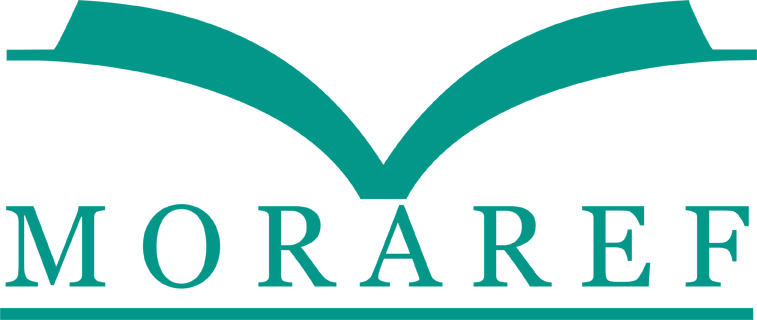Efficacy Of Ultraviolet Irradiation For Sterilization Of Dental Instrumen Against Oral Microbiome Growth
Abstract
Background: Oral microbiome bacteria can attach to a variety of surfaces including oral diagnostic devices. Oral diagnostic tools that are not properly cleaned and sterilized can be used as a place for bacteria to multiply and cause cross-infection. Objective: This research aims to test the success of sterilization equipment using Ultraviolet light to sterilize dental instruments when used for dental examination activities in the field. Methods: Randomized Experimental laboratory Pretest Posttest with Control Group Design. The subject of the study was the mouth glasses used after dental examination at UKGS. The intervention of the mouth glass was sterilized using Ultraviolet-c at three different times, namely 20 minutes, 25 minutes, and 30 minutes. Results: The results of Ultraviolet-c with One Way Anova test results showed a p-value of 0.000 (p<0.05) indicating a significant difference in the number of oral microbiome bacteria between sterilization time and the number of oral microbiome bacterial colonies. Pearson correlation test p-value (p<0.05) it can be concluded that there is a significant relationship between sterilization time and the number of oral microbiome colonies with a correlation coefficient of -0.850 which means that the longer the sterilization time, the number of oral microbiome bacteria decreases. Conclusion: Ultraviolet-c for 30 minutes is effective for sterilization of oral microbiome bacteria.
Keywords
Full Text:
PDFReferences
C. M. C. Volgenant and J. J. de Soet, “Cross-transmission in the Dental Office: Does This Make You Ill?,” Curr. Oral Heal. Reports, vol. 5, no. 4, pp. 221–228, 2018, doi: 10.1007/s40496-018-0201-3.
L. Yenkai, N. Fukuma, M. Totsika, L. Kenny, M. Morison, and C. Punyadeera, “The Performance of an Oral Microbiome Biomarker Panel in Predicting Oral Cavity and Orapharyngeal Cancers,” Front. Cell. Infect. Microbiol., vol. 8, no. 287, pp. 1–2, 2018.
A. Sarkar, M. . Kuehl, A. . Alman, and B. . Burkhardt, “Linking the Oral Mikrobiome and Salivary Cytokine Abundance to Circadian Oscillations,” Sci. Rep, vol. 11, 2021.
A. W. D. Adrianto, B. T. Hartomo, and D. A. Putri, “Variasi Oral microbiome Rongga Mulut Sebagai Biomarker Pada Bidang Kedokteran Gigi: Literature Review,” Indones. J. Dent., vol. 2, no. 1, p. 1, 2022, doi: 10.26714/ijd.v2i1.9865.
F. Fahdi et al., “Formulasi Obat Kumur Ekstrak Daun Sereh (Cymbopogon citratus) Terhadap Pertumbuhan Bakteri Streptococcus mutans,” Best J. (Biology Educ. Sains Technol., vol. 5, no. 1, pp. 231–236, 2022.
G. S. Abusalim, “Prevalence and investigations of bacterial contamination in dental healthcare associated environment,” J. King Saud Univ. - Sci., vol. 34, no. 6, p. 102153, 2022, doi: 10.1016/j.jksus.2022.102153.
H. Ibrahim, Pengendalian infeksi nosokomial dengan kewaspadaan umum di rumah sakit (integrasi nilai islam dalam membangun derajat kesehtan), vol. 53, no. 9. 2019. [Online]. Available: http://repositori.uin-alauddin.ac.id/15016/1/Pengendalian infeksi nosokomial dengan kewaspadaan umum di rumah sakit .pdf
W. A. Rutala, J. M. Boyce, and D. J. Weber, “Disinfection, sterilization and antisepsis: An overview,” Am. J. Infect. Control, vol. 51, no. 11, pp. A3–A12, 2023, doi: 10.1016/j.ajic.2023.01.001.
D. de M. Costa, L. K. de O. Lopes, H. Hu, A. F. V. Tipple, and K. Vickery, “Alcohol fixation of bacteria to surgical instruments increases cleaning difficulty and may contribute to sterilization inefficacy,” Am. J. Infect. Control, vol. 45, no. 8, pp. e81–e86, 2017, doi: 10.1016/j.ajic.2017.04.286.
G. Panta, A. K. Richardson, and I. C. Shaw, “Effectiveness of autoclaving in sterilizing reusable medical devices in healthcare facilities,” J. Infect. Dev. Ctries., vol. 13, no. 10, pp. 858–864, 2019, doi: 10.3855/jidc.11433.
M. Tao et al., “Sterilization and disinfection methods for decellularized matrix materials: Review, consideration and proposal,” Bioact. Mater., vol. 6, no. 9, pp. 2927–2945, 2021, doi: 10.1016/j.bioactmat.2021.02.010.
T. Sugiyama, B. Keinard, G. Best, and M. R. Sanyal, “Biochemical and photochemical mechanisms that produce different UV-induced mutation spectra,” Mutat. Res. - Fundam. Mol. Mech. Mutagen., vol. 823, p. 111762, 2021, doi: 10.1016/j.mrfmmm.2021.111762.
S. K. Bhardwaj et al., “UVC-based photoinactivation as an efficient tool to control the transmission of coronaviruses,” Sci. Total Environ., vol. 792, p. 148548, Oct. 2021, doi: 10.1016/j.scitotenv.2021.148548.
I. Puspita, N. Djuhriah, and E. Fikri, “Efektivitas Variasi Lama Paparan Sinar Ultraviolet-C Terhadap Penurunan Total Kuman Pada Alat Makan di Pantry PT.X,” J. Kesehat. Siliwangi, vol. 2, no. 2, pp. 440–446, 2021, doi: 10.34011/jks.v2i2.721.
A. D. Elisanti, E. T. Ardianto, N. C. Ida, and E. Hendriatno, “Efektifitas Paparan Sinar Uv Dan Alkohol 70% Terhadap Total Bakteri Pada Uang Kertas Yang Beredar Di Masa Pandemi Covid-19,” J. Ris. Kefarmasian Indones., vol. 2, no. 2, pp. 113–121, 2020, doi: 10.33759/jrki.v2i2.88.
DOI: https://doi.org/10.31983/jkg.v11i1.11543
Article Metrics
Refbacks
- There are currently no refbacks.
| View My Stats |











.png)


.png)
.png)









